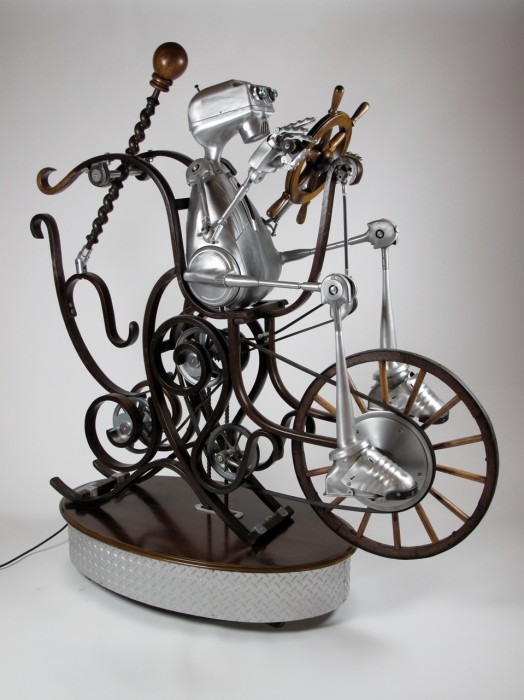Berkeley, CA, and El Cerrito, CA, in the San Francisco Bay area have been special examples of government, grassroots, and private business collaboration in recycling and reuse for the past 30 years. Below are comments on the decentralized model by one of its key advocates and activists, Dan Knapp. Dan is the founder of Urban Ore, which operates in both cities. Urban Ore is a reuse enterprise that handles 7,000 tons of materials a year with just 2% going to landfill. Among other achievements, Dan has authored the 12 categories of materials and products in the discard supply to allow for proper planning for each subset of materials and products.
Urban Ore and ILSR are long-term working partners.
Decentralized Recycling Models for Cities: Berkeley, CA, population 113,000, and El Cerrito, CA, population 24,000
by Dan Knapp, Ph.D.
Berkeley is a good example of a city that has an interlocking set of specialized operators with access to different subsets of the discard supply. All the operators cooperate with one another on policy, compete with one another for supply, and even trade resources with one another on a daily basis. All together, there are six major enterprises: one for-profit, two nonprofit, and three that are municipally owned and operated. They are: Urban Ore (transfer station salvage, reuse, some recycling including regulated materials); Community Conservation Centers (clean MRF operator, buyback and drop off operator, regulated materials operator), Ecology Center (residential CleanStream split-cart curbside pickup); and three City Operations: commercial curbside pickup including separate pickup for mixed plant debris and putrescibles, transfer station management, including more regulated materials and hard-to-recycle materials, and construction and demolition materials recovery from mixed loads. The City also provides garbage pickup service, but I don’t include that as recycling.
All this has been built up incrementally over time, in a process that is ongoing. Berkeley’s biggest problem, apart from periodic upsets caused by people who think a monopoly would be better, is that our facility is old and the customer interface is too small because the whole thing was designed to feed an incinerator that was never built. Altogether the City-owned discard management center occupies 9.6 acres; Urban Ore’s Ecopark adds another 2.6 to the total footprint of materials recovery in West Berkeley. There are other smaller companies dealing with smaller subsets of the discard supply, but these are the main ones.
For a community pursuing essentially the same model as Berkeley, consider the City of El Cerrito, about five miles to the north. They opened their source-separation facility in the early 1980s, and rebuilt it in 2011 after citizens rejected the idea of closing it down. The rebuilt facility opened in 2012 on Earth Day and has been a big success. It features quick in-and-out traffic flow, a fine and welcoming administration building, and a large customer interface with over thirty drop-off options. It is city-owned and operated, but there are a number of contractors, including Urban Ore, that also provide specialized recovery services onsite.
I personally think there are many advantages to this decentralized model. Last year at the CRRA (California Resource Recovery Association) conference held in Oakland, Berkeley’s operators presented their businesses as a case study of the ecology of commerce in action.
Photo credit: Urban Ore. A sculpture was made mainly from materials salvaged at Urban Ore by Bay Area artist Nemo Gould.




